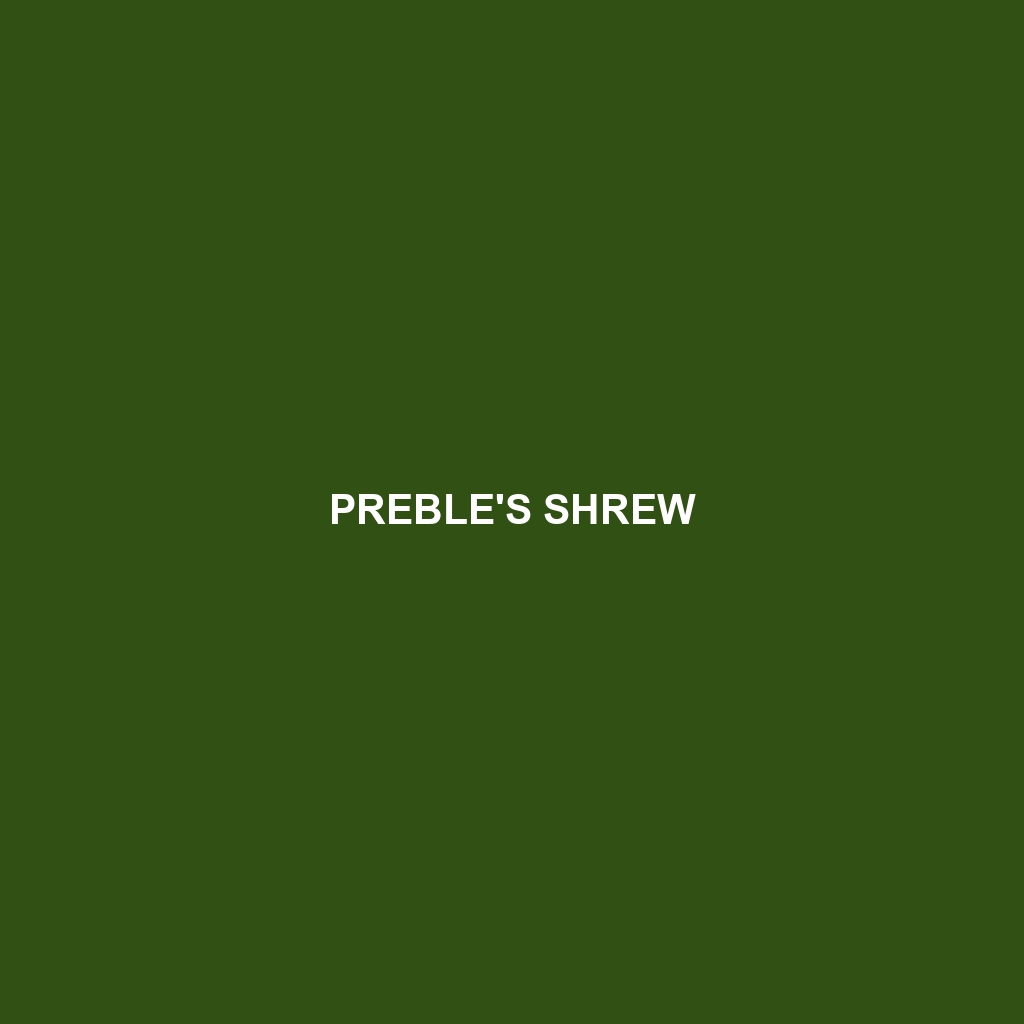Species Description: Preble’s Shrew
Common Name: Preble’s Shrew
Scientific Name: Sorex preblei
Habitat
Preble’s Shrew is primarily found in the montane regions of North America, especially within the Rocky Mountain range. Its preferred habitat includes moist meadows, grasslands, and dense underbrush areas that provide ample cover and moisture. This shrew thrives in environments with rich soil and abundant vegetation, making it a vital part of its natural ecosystem.
Physical Characteristics
The Preble’s Shrew is a small mammal, measuring approximately 8 to 10 cm (3 to 4 inches) in length, excluding the tail. It has a slender body with a pointed snout, and its fur is generally dark brown to grayish in color. One of its distinctive features includes a soft, velvety fur texture and relatively large eyes, which help it navigate its dimly lit habitat.
Behavior
Preble’s Shrew is primarily nocturnal, actively foraging for food during the night. It exhibits high energy levels and is known for its quick movements and agility. This species often creates intricate burrow systems and is adept at navigating through dense vegetation. Socially, the shrew tends to be solitary, although it may share territory during the breeding season.
Diet
Preble’s Shrew is an insectivore, primarily feeding on insects, earthworms, and small invertebrates. Its diet also includes other small organisms found within the moist soil of its habitat. The shrew uses its keen sense of smell to locate prey, making it an effective hunter in its ecological niche.
Reproduction
The reproductive habits of Preble’s Shrew involve a breeding season that typically spans from late spring to early summer. Females give birth to a litter of 3 to 7 young after a gestation period of about 21 days. The young are born blind and helpless, relying on their mother for survival during the initial weeks. Notably, the mother is known to exhibit strong maternal care until the offspring are weaned and capable of independent foraging.
Conservation Status
As of the latest assessments, Preble’s Shrew is considered to be a species of “Least Concern” on the IUCN Red List. However, habitat destruction and climate change pose potential threats to its populations. Conservation efforts are essential to maintain its populations and habitats, particularly in regions undergoing significant ecological changes.
Interesting Facts
Preble’s Shrew has a high metabolic rate, requiring frequent feeding to sustain its energy levels. This small mammal can consume food items that are up to 25% of its body weight daily! Additionally, it is known for its ability to produce ultrasonic vocalizations, which serve as communication signals in its dense habitat.
Role in Ecosystem
Preble’s Shrew plays a crucial role in its ecosystem by contributing to the control of insect populations and serving as a prey species for larger predators. Its burrowing activities aerate the soil, promoting plant growth and health within its habitat. Through these interactions, the Preble’s Shrew supports ecological balance, highlighting its importance within the food web.
